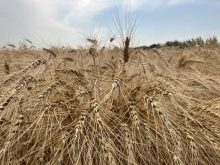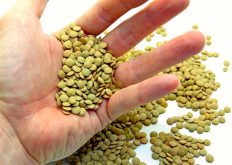Glacier FarmMedia | MarketsFarm – At this time there have yet to be any firm estimates as to what canola yields on the Canadian Prairies are most likely to be. However, once those start rolling in, the canola market will shift towards demand, according to broker Tony Tryhuk of RBC Dominion Securities in Winnipeg.
The recent heatwave across Western Canada has adversely affected canola yields in the drier areas of the region as well as later planted crops as canola blooms were unable to withstand the heat.
Read Also

U.S. grains: CBOT soybeans, corn, wheat fall in USDA data aftermath
Chicago grains took a dive on Friday, following a closely watched U.S. government crop report and the release of export data that could provide clues into Chinese buying.
Tryhuk said canola is currently too expensive to effectively compete with the Chicago soy complex, Malaysian palm oil or European rapeseed.
“China is the only game in town,” Tryhuk stated, noting that other major customers have slashed their canola imports in 2023/24.
The most recent data from the Canadian Grain Commission, which as of May, has China’s canola imports at 3.84 million tonnes in 2023/24, down from 4.22 million the previous year. Japan reduced its intake to 725,000 tonnes from 961,700; Mexico chopped its import to 466,000 tonnes from 1.08 million; the United Arab Emirates slipped to 155,700 tonnes from 169,000; and Pakistan was at zero versus 267,000 tonnes this time last year.
“We’re not doing anyone any favours by being up at $680,” Tryhuk remarked, pointing to a strong prospect of good soybean yields in the United States come harvest time.
Mixture of hot temperatures across the Prairies and short covering by the speculative funds combined to drive canola well passed its resistance levels. But the Canadian oilseed, once very competitive with its rivals had shifted to a rather unfavourable position.
Tryhuk suggested 2024/25 ending stocks could be much higher than the current forecast by Agriculture and Agri-Food Canada of 2.10 million tonnes.














